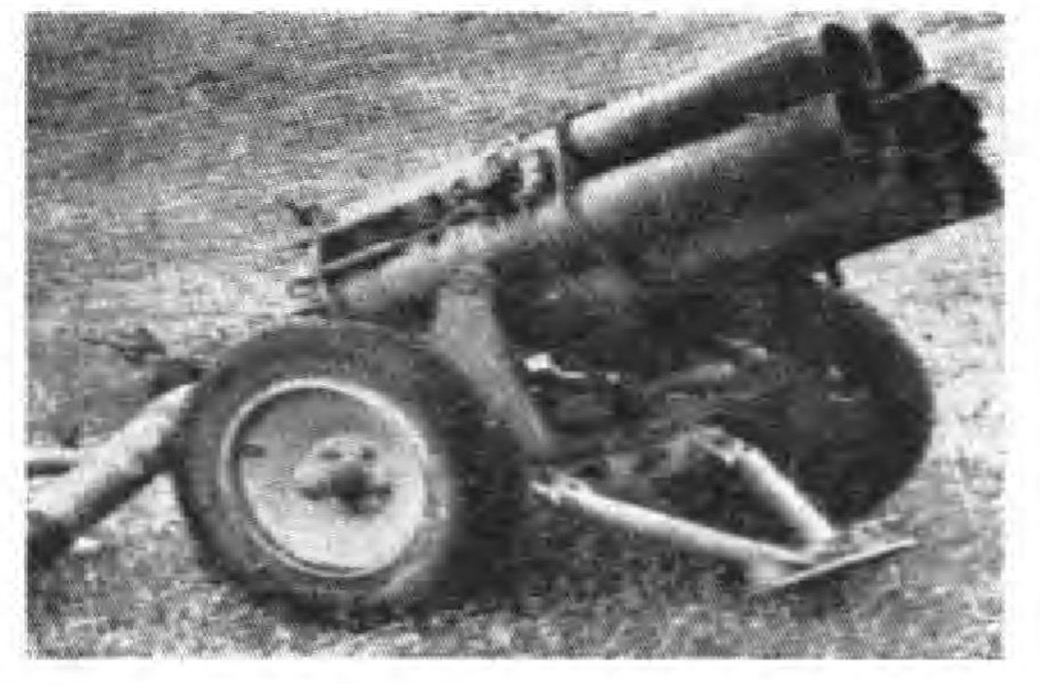THE Germans expected to use this weapon on a large scale as a carrier rocket for the dissemination of various chemical warfare agents in the event of chemical warfare being introduced during World War II.
These rockets were muzzle loaded into, and electrically fired from a six barrelled projector resembling a small field gun of sturdy construction. A salvo of 324 rounds could be fired every 90 seconds by a regiment armed with the weapon.
The projectile carries a charging of approximately 4 pints of gas to a maximum range of 6,600 yards; that is. thirty per cent more chemical agent in proportion to its size than the German gas shell of similar calibre. This increase is due to the use of a smaller burster, and the comparatively thin walled gas container, which, unlike a shell, does not have to withstand the stresses produced by firing from a conventional gun.
An interesting and unconventional feature of its design is the forward position of the propellant or rocket motor which, when it reaches the target, allows the gas container to burst above ground level. This increases the chemical efficiency of the weapon.
The rocket consists essentially of a cylindrical rocket motor containing cither black powder or diglycol propellant charges, to which is attached the tail portion composed of the venturi jet system and the gas charging.
An igniter inserted in one of the venturi nozzles and fired electrically, ignites the propellant, the gases being ejected through the venturi nozzles, which are offset so as to impart spin during flight. The reaction from the gases carries the rotating projectile forward towards the target.
The shock imparted to the projectile on striking the target, causes the base fuze to detonate the burster. This ruptures the gas Container and the remaining spin of the rocket assists in distributing the contents above ground, thus avoiding that waste of chemical agent due to burying, which is a common feature of the conventional gas shell.
By varying the size of burster used, the size of the area to be contaminated, and consequently the degree of contamination, can be controlled.
Although primarily designed for use with C.W. agents, the Nebelwerfer can be used as an area weapon to project both screening smokes and H.E. It also illustrates the fact that the range, accuracy, and destructive capacity of the comparatively primitive field rockets designed during World War II are capable of further development.


